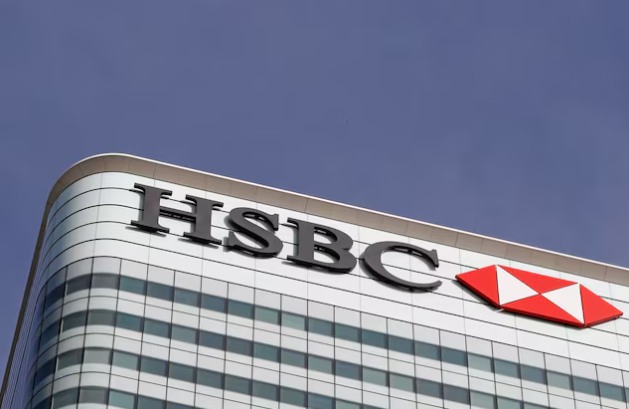
Date Issued – 23th August 2024
Courtesy of the Research Department at Balfour Capital Group
HSBC Targets Doubling UK Wealth Business Amid Mass Affluent Market Push
HSBC (HSBA.L) is setting its sights on doubling the assets under management (AUM) in its UK wealth division to £100 billion ($131 billion) over the next five years. This strategic move aligns with a broader industry trend of banks tapping into the ‘mass affluent’ segment for increased fee income. José Carvalho, Head of Wealth and Personal Banking UK, emphasized HSBC’s goal of becoming a top-five player in the British market, leveraging its global reach to attract clients who bank across multiple markets or hail from overseas.
“International connectivity is our competitive edge and a key growth driver,” Carvalho told Reuters. HSBC, which manages $712 billion in assets globally, plans to expand its advisory team to support this growth initiative, though specific hiring numbers were not disclosed. The UK’s wealth management market is currently dominated by St James’s Place, which reported AUM of £168 billion at the end of last year. According to research firm Coalition Greenwich, the largest UK banks collectively generated $12 billion from wealth management in 2023, marking an 11% year-on-year increase. St James’s Place forecasts a 7% growth in the overall wealth market.
Rivals Barclays (BARC.L) and Lloyds (LLOY.L) have also recently announced plans to target the ‘mass affluent’ segment, defined by Lloyds as customers with deposit balances ranging from £75,000 to £250,000. This demographic holds approximately £4 trillion, accounting for half of the UK’s wealth market, according to data from Lloyds and the Investment Association. This strategic pivot reflects banks’ desire to diversify into sectors less impacted by falling interest rates, where technological advancements are enabling competition with independent providers. However, experts caution that the market is becoming increasingly crowded.
“The appetite for wealth management services is growing, but competition is fierce, with nearly every major bank now aiming for a larger share,” said Nigel Moden, EMEIA Banking & Capital Markets Leader at EY, in an interview with Reuters.
Historically, big banks have focused on ultra-high-net-worth individuals, leaving the mass affluent to independent financial advisors like St James’s Place. However, Carvalho noted a shift in strategy, highlighting an opportunity in the mass affluent segment, which remains largely dominated by independent financial advisors (IFAs), controlling around 55% of the market. HSBC’s approach includes cross-selling more products to its wealth clients via enhanced mobile and digital platforms, while also encouraging wealthier clients with substantial savings to consider long-term investments.
“For the mass affluent market, banks are adopting a hybrid model that combines digital technology with human advisors, offering enhanced services that particularly appeal to younger clients,” said Grace Miu, Head of Wealth at Coalition Greenwich.
Lloyds is pursuing a similar strategy with its new Lloyds 360 digital tool, while Barclays is focusing on its recently merged Private Bank and Wealth Management unit. However, Christian Edelmann, Managing Partner for Europe at Oliver Wyman, warned that the collective ambitions across all banks may exceed what the market can realistically deliver, suggesting potential disappointments ahead.
Nestle Shares Under Pressure After CEO’s Sudden Departure
Nestle shares are expected to drop on Friday following the unexpected resignation of CEO Mark Schneider and the appointment of long-time company executive Laurent Freixe. Schneider’s abrupt departure, announced late Thursday after a board meeting, ends his nearly eight-year tenure as the first outsider to lead the Swiss food giant in almost a century.
Investor confidence in Schneider had already been waning over the past 15 months, and his sudden exit has rattled the market, with shares in Nestle maker of KitKat and Nescafe indicated to fall nearly 3% in premarket trading in Zurich.
Freixe, a 62-year-old Frenchman with deep industry knowledge and extensive networks, is expected to steer Nestle back to its core strengths in sales and marketing. His appointment comes as the company has lagged behind competitors like Danone and Unilever in recent quarters. Critics have pointed out that Nestle’s heavy reliance on price hikes has hurt sales volumes, driving cash-strapped consumers towards cheaper alternatives. Freixe, who has already begun his new role, faces the challenge of restoring market share and boosting sales in a challenging environment.
“There will always be challenges, but we have unparalleled strengths,” he remarked. “We can strategically position Nestle to lead and win in every market we operate in.”
Freixe’s experience includes leading Nestle’s European business during the global financial crisis and most recently heading the company’s Latin America zone, which has experienced robust growth. Analysts believe Freixe’s focus on fundamentals and passion for products will be crucial for Nestle’s recovery.
“With Laurent Freixe in charge, Nestle will return to its roots,” said Jean-Philippe Bertschy, an analyst at Bank Vontobel. “Successful food companies like Lindt and Danone have marketing and sales experts as CEOs, and Nestle is likely to benefit from this approach as well.”
Restoring sales growth will be key to regaining investor trust, particularly after Nestle shares hit an all-time high in January 2022 but have been declining since May 2023 due to earnings misses and guidance downgrades. While Schneider was praised for some strategic moves, including selling Nestle’s U.S. confectionery business and North American water brands, his efforts to revitalize the company did not materialize quickly enough for investors. Missteps, such as the costly acquisition and subsequent sale of a peanut allergy treatment company, further eroded confidence. As Freixe takes the helm, his ability to reignite growth and stabilize the company will be closely watched by the market.
Apple to Allow iPhone Users in Europe to Delete the App Store
Apple will soon permit iPhone and iPad users in the European Union to delete the App Store and Safari browser from their devices, a significant shift in its long-standing policy. This move comes as Apple adjusts to the EU’s new digital regulations aimed at increasing competition and reducing Big Tech’s dominance. Previously, Apple had tightly controlled the App Store as the exclusive gateway for apps and digital content on its devices. However, under the EU’s Digital Markets Act (DMA), the tech giant is required to offer more flexibility to users. According to an update on Apple’s support page, users in the EU will soon be able to delete the App Store, Messages, Camera, Photos, and Safari apps, with only Settings and Phone remaining undeletable.
Apple is also introducing a new section in iOS where users can manage default settings for key functions like browsers, messaging, and phone calls. The company emphasized that developers will need to meet strict privacy and security criteria before offering alternative browser engines on iPhones, given the high risk of exposure to malicious content. Historically, app developers were required to use Apple’s payment system within the App Store, allowing Apple to take a share of transactions. The EU has criticized this practice, arguing that it restricts developers from directing users to alternative payment methods. Apple was recently accused of violating the DMA, marking the first time a tech firm faced such charges under the new law.
In response, Apple announced that, starting this autumn, developers in the EU will be allowed to promote and sell their products outside of the App Store. This includes introducing a new fee structure for transactions made through alternative platforms. The European Commission, which oversees compliance with the DMA, has stated it will review Apple’s upcoming changes to ensure they meet regulatory requirements and consider feedback from developers and the market.
The DMA is part of the EU’s broader effort to regulate Big Tech, with other companies like Google, Amazon, Meta, Microsoft, and TikTok’s owner ByteDance also required to comply. The law empowers the EU to impose substantial fines on companies that fail to adhere to the rules.
As the digital landscape continues to evolve under these new regulations, Apple’s decision marks a significant shift in how it operates within the EU, potentially setting a precedent for other regions.

Japan’s Core Inflation Accelerates, but Demand-Driven Growth Slows Below 2%
Japan’s core inflation continued to rise for the third consecutive month in July, with the core consumer price index (CPI) which excludes fresh food climbing 2.7% year-on-year, slightly up from June’s 2.6%. This keeps inflation above the Bank of Japan’s (BOJ) 2% target for the 28th straight month. However, a closer look reveals that demand-driven inflation is weakening, which could complicate the BOJ’s decision-making on future interest rate hikes.
The “core core” index, which strips out both fresh food and energy costs and is a key indicator for broader inflation trends, rose just 1.9% in July, down from 2.2% in June. This marks the first time since September 2022 that it has fallen below the critical 2% threshold. The rise in core CPI largely reflected the phasing out of government subsidies for household utility bills. Without this factor, overall inflation appears to be decelerating, especially with recent government measures to reinstate utility bill relief and a stronger yen lowering import costs. As a result, core CPI growth is expected to slow further.
This inflation data is crucial as the BOJ considers its next steps on monetary policy. In July, the BOJ surprised markets by raising interest rates to a 15-year high and indicated it might continue to tighten monetary policy if inflation remains on track to consistently hit its 2% target. This move caused significant market reactions, with the yen surging and Tokyo stocks suffering their steepest single-day decline since 1987’s Black Monday.
BOJ Governor Kazuo Ueda, speaking on Friday, reiterated the bank’s readiness to hike rates again if inflation sustains above 2%. However, he also emphasized the need for caution given the ongoing volatility in financial markets.
Japan’s economy showed strong recovery in the second quarter, driven by robust consumer spending, which supports the case for continued monetary tightening. However, in a recent Reuters poll, 57% of economists predicted that the BOJ would raise borrowing costs again before the year’s end, reflecting uncertainty about the future direction of Japan’s inflation and economic growth.
DAX Index News: Market Eyes Powell’s Jackson Hole Speech Amid Rate Cut Speculation
Market Overview
On Thursday, August 22, the DAX gained 0.24%, adding to the previous day’s 0.50% rise, closing at 18,493. This modest uptick came as investors eagerly await Fed Chair Jerome Powell’s speech at the Jackson Hole Symposium, a key event that could shape expectations for future interest rate cuts.
Key DAX Market Movers on Thursday
Bank stocks led the DAX, with Deutsche Bank and Commerzbank posting gains of 4.00% and 2.12%, respectively. Positive sentiment was driven by Deutsche Bank’s settlement of lawsuits related to its acquisition of Postbank, which removed a significant overhang on the stock.
German Private Sector PMIs Support ECB Rate Cut Expectations
Germany’s economic outlook showed signs of weakening, as the HCOB Services PMI fell to 51.4 in August from 52.5 in July, and the HCOB Manufacturing PMI dropped to 48.5 from 49.1. The downturn in both services and manufacturing underscores the challenges facing the Eurozone’s largest economy and bolsters expectations of a potential rate cut by the European Central Bank (ECB) in September. According to Dr. Cyrus de la Rubia, Chief Economist at Hamburg Commercial Bank, “The struggles in manufacturing are starting to spill over into the otherwise steady services sector,” highlighting the growing economic pressures.
Wage Growth and ECB Minutes Signal September Rate Cut Debate
Adding to the rate cut speculation, wage growth in the Eurozone decelerated, with Q2 2024 growth slowing to 3.55% from 4.74% in Q1. The ECB’s recent meeting minutes also suggested that policymakers are seriously considering a 25-basis point rate cut in September to stimulate the economy. Lower borrowing costs could enhance corporate earnings and lift stock prices, provided the broader economic environment remains stable.
US Jobless Claims and Services PMI Ease Recession Fears
Across the Atlantic, the US labor market showed resilience, with initial jobless claims rising slightly to 232,000 in the week ending August 17. The S&P Global Services PMI edged up to 55.2 in August from 55.0 in July, signaling continued strength in the US economy. This helped ease recession fears, although investors are still betting on a potential 25-basis point rate cut by the Fed in September, which could boost demand for DAX-listed stocks. Parker Ross, Chief Economist at Arch Capital Global, noted,
“We are still seeing a very gradual deterioration in jobless claims data, suggesting that while layoffs remain low, finding new employment is becoming more challenging.”
US Market Trends
On Thursday, August 22, US equity markets struggled as 10-year Treasury yields rose, driven by diminishing expectations for a 50-basis point Fed rate cut. The Nasdaq Composite dropped by 1.67%, while the Dow and S&P 500 declined by 0.43% and 0.89%, respectively.
US Economic Calendar
All eyes are now on Fed Chair Powell’s speech at the Jackson Hole Symposium on Friday, August 23. A hawkish tone could dampen hopes for a September rate cut, potentially triggering a sell-off in the DAX. Conversely, dovish comments supporting multiple 2024 rate cuts could propel the DAX towards 19,000. Nick Timiraos, Chief Economics Correspondent at the Wall Street Journal, suggested that
“Officials could cut rates by a quarter-point at each of their next few meetings, depending on economic conditions.”
Near-Term Outlook
The DAX’s near-term direction hinges on Powell’s upcoming speech. A dovish stance could push the index towards 19,000, while a hawkish message might see it dip below 18,000.
DAX Technical Indicators
The DAX remains above its 50-day and 200-day EMAs, indicating bullish momentum. A move towards 18,750 is possible if the index can reclaim 18,500, potentially challenging the all-time high of 18,893. However, a drop below the 50-day EMA could see the index test the 18,000 level, with further support at 17,615. The 14-day RSI at 60.13 suggests the DAX could approach its all-time high before reaching overbought conditions, making Powell’s speech a crucial factor to watch.
Conclusion
Investors should remain vigilant, closely monitoring Powell’s speech, economic indicators, and expert analyses to navigate market risks effectively.
Find below some of our Buy/Sell Recommendations. Balfour Capital Group is a distinguished global boutique investment management firm with $350 million AUM and over 1000 Clients.

Disclaimer: This Buy/Sell Recommendations provides financial insights for informational purposes only. It does not constitute financial advice or recommendations for investment decisions.

